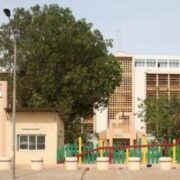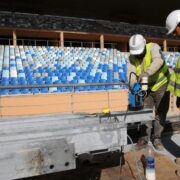
(Ecofin Agency) – For many years now, Ivory Coast has been weathering coastal erosion and deforestation. Ahead of the COP 28, the Ivorian government just reiterated its commitment to better protecting the environment.
The COP 28 will be held in the next two months, and ahead of the conference, Ivory Coast, during its latest council of ministers, has adopted several key measures to foster sustainable development.
The steps include the creation of three agroforests and a natural reserve, and the government has also adopted a decree that defines the terms and conditions for implementing the PAGIL (Plan d’Aménagement et de Gestion Intégrée du Littoral – Integrated Coastal Development and Management Plan).
The Scio classified forest, the Haute-Dodo classified forest, and the Rapides-Grah classified forest, covering 89650, 174,415 and 273,804 hectares respectively, will be set up as agroforests.
Agroforestry is a farming method that combines reforestation with agricultural or pastoral practices. The creation of agroforestries should enable the regeneration of classified forests and the rehabilitation of forest cover while maintaining agricultural production.
Regarding the natural reserve announced, it will be located in Taï, a locality in the West of the country. There, the Cavally classified forest will be transformed into a natural reserve. The project aims to better protect the forest against pressing anthropogenic threats. By 2030, the authorities hope to restore 20% of the national forest cover.
The last measure, related to the PAGIL, includes two decrees that will help the country fight coastal erosion. The first decree approves the PAGIL and the second determines terms and conditions for its implementation. The PAGIL, according to the government, aims to “sustainably tackle the anarchic exploitation and overexploitation of the coastline, as these accelerate pollution and ecosystem degradation in the coastal zone“.
The various measures come as Côte d’Ivoire, mainly an agricultural economy, records a rate of forest degradation of between 90 and 95%, according to official figures.
On the other hand, the deterioration of the sea coasts is also alarming. On August 10, 2023, the Ivorian Meteorological Services warned of high tides and risks of major overflows in four coastal towns. In these areas, several residents reported cases of flooding as a result of advancing seas.
Victoria Sedji











Comments